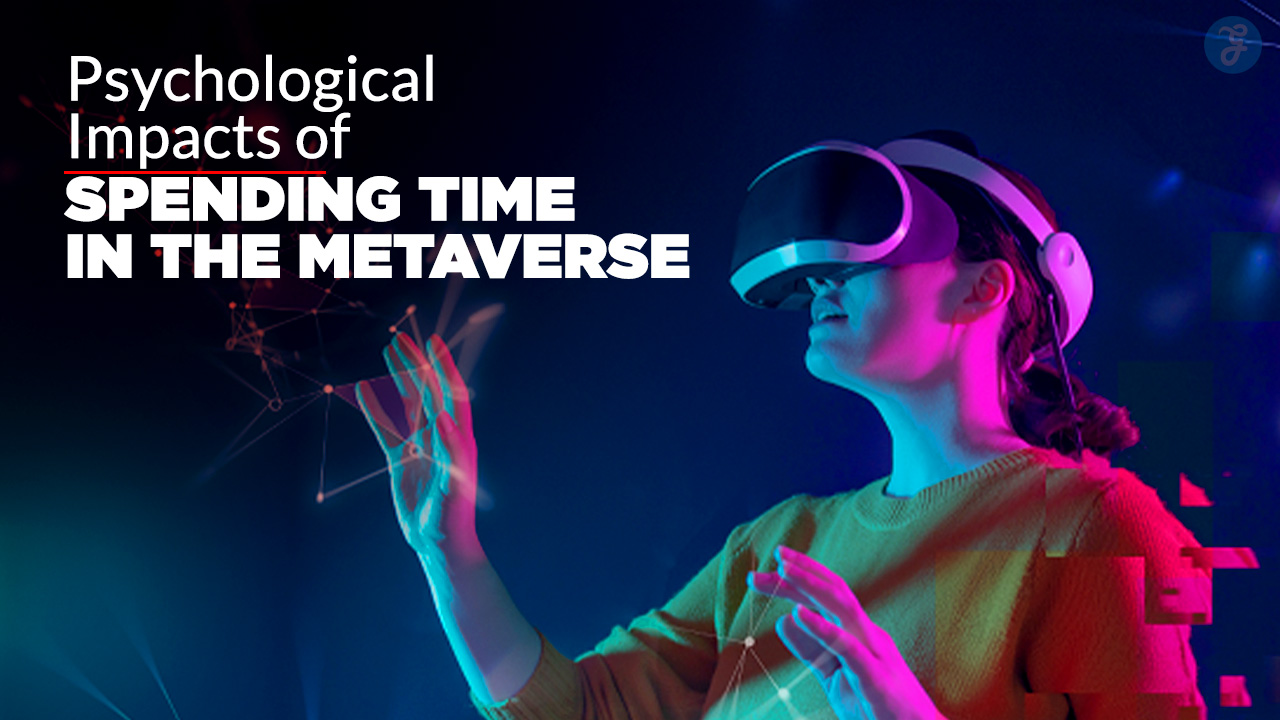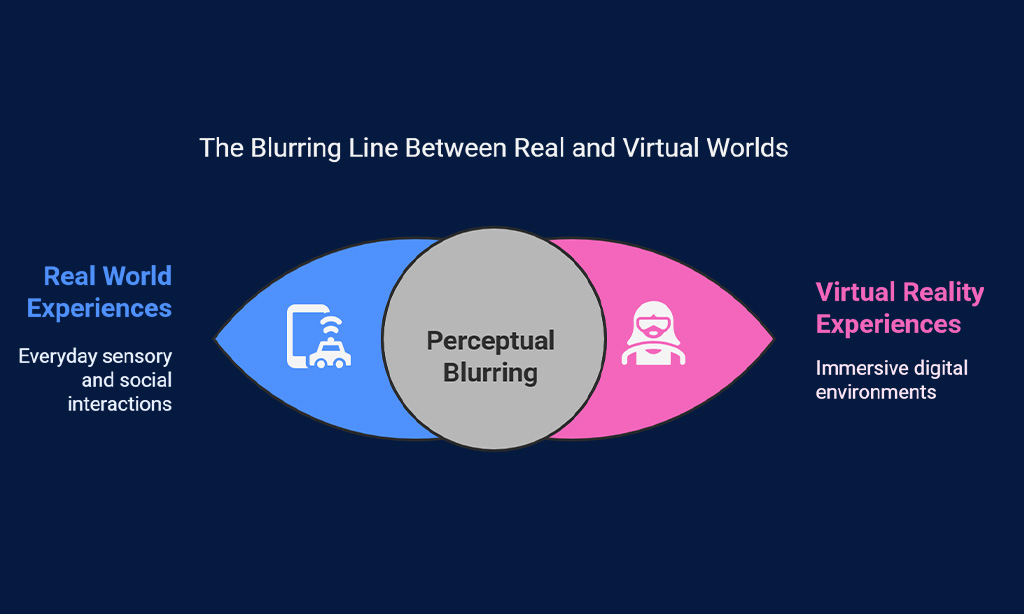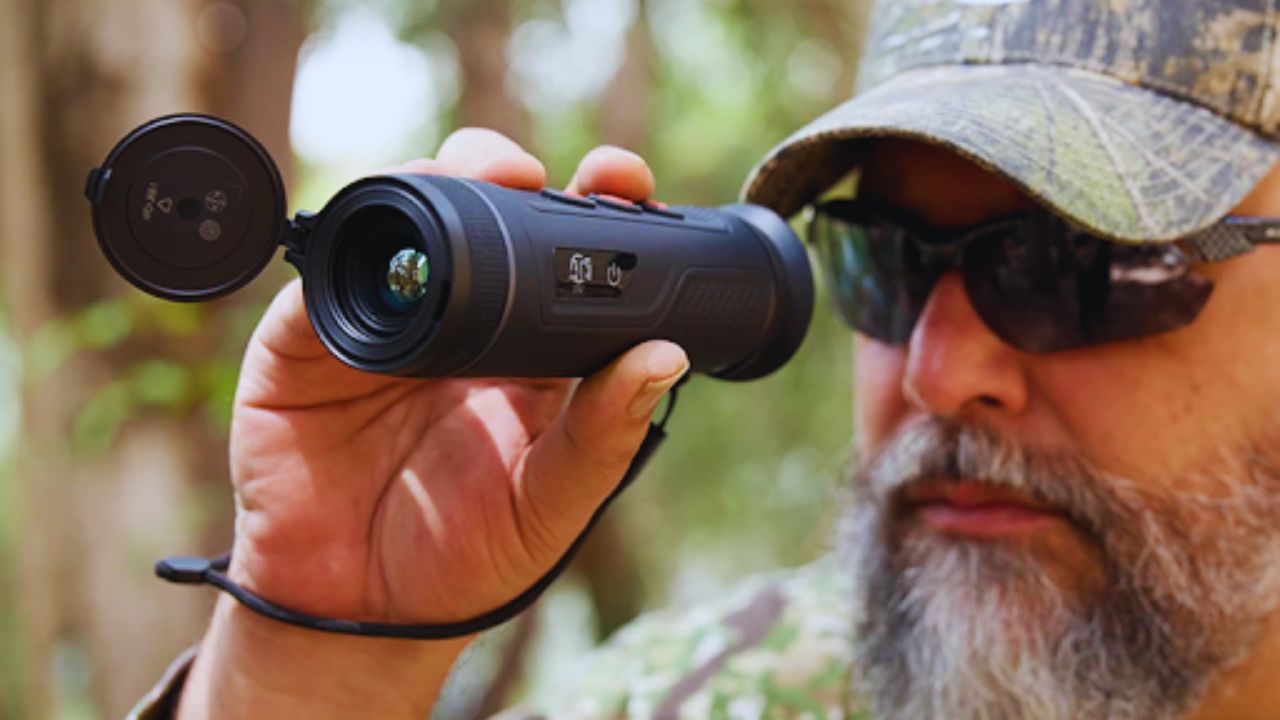You enter the metaverse to meet friends or join a class in virtual reality. You slip on a headset, enter a 3D space, then log off feeling either closer or more alone. You might wonder how these visits affect your mental health.
Gartner says 25% of people will spend at least one hour daily in the metaverse by 2026. In this post, we present 7 ways VR and AR can shape your mind and mood. We cover social ties, identity, focus, and more.
We share tips to keep you in control. Read on.
Key Takeaways
- Gartner says 25% of people will use the metaverse one hour daily by 2026, which can boost social bonds in VRChat and Meta Horizon Worlds but also raise cyberbullying risks.
- Avatars let users like Sarah join book clubs and art crews to lift mood, but they can also cause identity confusion and avatar body dysmorphia.
- Clinicians use BraveMind for PTSD and VR meditation to cut anxiety, but too much VR can drop empathy by 15% and harm sleep.
- Mixed reality headsets like HoloLens can blur real and virtual scenes—users like Jake might mistake a pixel café for a real one and lose focus.
- Users in VR spaces face hate speech and threats that can trigger PTSD and low self-esteem, as Basu T. noted in 2022, showing virtual harassment harms mental health.
Enhanced Social Interaction
A VR headset drops you into a buzzing virtual community, where avatars swap jokes and memes. This brew, with social skills training in AR settings, shapes new roles, as gamers morph into party hosts.
Increased sense of connection in virtual communities
People form friendships in virtual communities. They chat in real time and share moments. The Metaverse helps mitigate loneliness by fostering social connections while users stay physically alone.
Virtual reality headsets place them in immersive worlds with spatial audio and lively avatars. Gamers and friends swap stories, play team missions, even attend live concerts together.
This interaction boosts emotional well-being and eases social isolation.
One teen, Sarah, found a book club in a vibrant library room. She uses a virtual space that looks like a cozy café, where avatars hold books and sip coffee. The lively social interactions improve her social skills and lift her mood.
Digital communities like this reshape mental health support, they turn a solo stay into a shared journey.
Formation of new social roles and dynamics
Gamers assume moderator, host, and builder roles in virtual reality (vr) hubs like VRChat, Rec Room, Roblox, and Meta Horizon Worlds. This shift alters socialization patterns in digital environments, it mirrors tasks from the real world.
A newbie might run a fashion show on Roblox, while another leads a paintball squad in Rec Room. Each avatar crafts a persona that shapes group rules, team tasks, and status.
Therapists run exposure therapy inside Meta Horizon Worlds, they mirror phobia triggers. Art crews form squads that tag real walls with virtual murals, using augmented reality (AR) headsets.
Squads fight social isolation, they chat across nations on social networks inside virtual environments. Teens boost emotional well-being, they lean on peer support for shared feelings.
Identity Exploration and Confusion
You can shape a digital persona in a mixed reality headset, explore new paths of self-expression, and later wonder which mask really feels like you. That blur can spark bright ideas, but it can also spin a maze of identity detachment.
Opportunities for self-expression through avatars
Avatars let users play dress-up across digital worlds. A teen might sport green skin. A young adult could shape a 3D character to match an inner style. This tweak can boost self-perception and spark confidence.
Mental health can improve as users test new looks without fear. A person with agoraphobia might try bold moves in virtual reality. That test can help in real therapy sessions. A digital persona feels like a blank canvas.
Virtual dogs from The Digital Pets Company Ltd. step in as playful sidekicks. They spark emotion and ease stress. A stray belly rub or virtual walk can calm anxiety in digital environments.
This bond fosters emotional well-being and serves as a stress relief tool. Kids and older folks alike cheer as their pup wags a tail. Immersion in these virtual experiences feels warm and real.
A virtual dog avatar can mirror a caring side and let hearts shine.
Challenges related to identity detachment and confusion
Teenagers don VR headsets and meet Virtual Beings. They craft avatars with a game engine and hop into a VR platform. AI chatbots can spark strong feelings and form emotional bonds.
Such ties may lower empathy for humans and stir confusion about who they really are. Users switch personas on social media platforms and virtual reality worlds every day. They face identity detachment, chasing digital masks and avatar body dysmorphia.
Parents spot rising mental health issues like internet gaming disorder and social isolation in young adults. Counselors note reduced working memory capacity and attention deficit after long VR sessions.
Teenagers plug into a VR headset or mixed reality tools like an AR app. These digital environments can blur lines between self and screen. They risk losing sense of real world worth outside the Metaverse.
Emotional Well-being
Immersive tech can calm restless minds and ease the ache of isolation in a digital space. But leaning on these screen hugs too much can spark fresh anxiety loops and stretch our real bonds thin.
Positive impacts on reducing loneliness and anxiety
Many people battle social isolation at home. They slip on a virtual reality headset and step into a vast virtual world like Second Life. They join a busy poetry circle or trivia night.
They chat with strangers, share jokes, and feel seen. Virtual and augmented reality platforms foster social interactions that lift emotional well-being.
Those new bonds ease loneliness and tame anxiety. Clinicians use BraveMind to help former service members with post-traumatic stress disorder, and hobbyists find calm in group meditation in VR.
People notice lower stress in just days. These digital environments support mental health while reducing social isolation.
Risks of increased emotional dependency on virtual spaces
Users can grow too close to Virtual Beings in virtual reality. This bond may drain real-world empathy. Some studies list a drop in human empathy by 15% after long VR sessions. Kids with internet gaming disorder might skip friends for AI companions.
Heavy digital media use can blur feelings in physical life. Teens may face social isolation and mental health problems. Addiction to virtual worlds can trigger anxiety and panic attacks.
VR headset fans might swap real hugs for AI chat.
Cognitive Development
Virtual puzzles train problem-solving, and they feel like hunting secret treasure. Kids spark creativity with smart lenses and neural interfaces, chasing ideas like cats after a laser dot.
Improvement in problem-solving and creativity
Engineers test machines in VR labs by using digital twins. A digital twin mirrors real machines down to nuts and bolts. It lets crews run 100 trials a day on a jet engine. Teams spot design flaws 60% faster than with paper plans.
This mix of augmented reality and simulation cuts costs and trims waste. It helps boost motivation and sparks fresh ideas.
Kids from Generation Z log hours of digital media use in VR worlds like a sandbox. They play video games, solve puzzles, build castles, even rewrite code on a virtual whiteboard. Immersive media soaks their senses and fires up new ideas.
Research points to improved cognitive effects and problem-solving skills. This boost can aid mental health and cut social isolation, as they share wins on social networks.
Potential overstimulation and reduced attention spans
Virtual reality goggles blast fast visuals and loud sounds into the brain. They pack more images per second than TV or internet video. Kids can feel a jolt of sensory overload, like a carnival ride they cannot exit.
Kristen Shockley noted Zoom fatigue from camera use.
That sensory jolt can shrink attention spans. Studies tie digital media use to quick shifts in focus. Haptic gloves and VR apps force the mind to switch tasks. This stress can hurt mental health and mimic attention-deficit hyperactivity disorder.
Addiction and Excessive Use
Players chase hours in immersive headset tech and digital overlay worlds. They slip into online play compulsion and social media addiction, dodge chores, and ghost friends.
Risk factors for addiction to virtual environments
Jake put on a VR headset and lost track of time. His brain chased a hit, like a gamer chasing a top score. Social isolation and lonely moods can drive him back into virtual environments.
Heavy virtual reality use can spark internet gaming disorder. Experts say this mirrors gaming addiction.
Vivid social spaces in the metaverse feel real. Likes and praise on social networks flood you fast. That rush can hook you like a fish on a line. A loop of digital addiction may form.
It can harm mental health and blur your sense of real life.
Impacts of excessive time spent in the Metaverse
Kids and parents log extra hours on social networks and digital environments. A recent survey shows that the average daily time spent on social media by U.S. children and adults exceeds two hours.
Plugging into VR headsets feels like stepping into a candy store with no closing time. Augmented reality glasses pile on more minutes. Some chase non-fungible tokens as badges of status.
They can slip into internet gaming disorder. Such addiction strains emotional well-being and mental health.
Sleep suffers under late-night VR quests. Teens report social isolation and irritability. Parents note aggression and poor school focus. Some users feel paranoia or persecutory delusions after long sessions.
Others miss real chats while buried in mixed reality hubs. These habits can trigger anxiety or body dysmorphia.
Perception of Reality
Your brain may mix virtual reality scenes with the real world, as it trusts subtle, shifting cues from a head-mounted display and movement sensors. This blur can feel like a funhouse mirror, bending your sense of time and place.
Blurring boundaries between virtual and physical worlds
People slip virtual objects into real life after hours in the Metaverse. The Metaverse can alter perceptions of reality. Augmented reality glasses layer game cues onto street signs.
Emotional bonds with Virtual Beings and AI chatbots feel real.
Brain signals blur the line between a headset display and human senses. Smart glasses like HoloLens trick the brain with mixed reality demos. Users may catch themselves reaching for a dropped sword in the living room.
Social interactions in virtual environments spit out new roles. Heavy digital media use risks mental health and sparks addictive behaviour.
Difficulty differentiating between real-world and virtual experiences
Jake logged into the Metaverse with his Oculus Rift. He saw his favorite cafe in mixed reality. He felt its buzz, heard chatter, smelled coffee. His mind started to blur the online cafe with his local coffee shop.
VR can trick the human mind into treating a pixel as real.
In virtual reality, users stroll through augmented reality malls. They react like shoppers in a real place. Some report mild disorientation after removing a VR headset. The internet feeds this shift too.
Mental health experts warn that regular use can shift social interactions and alter perception of real and digital environments. A slice of digital and physical life can mix into one, leaving folks unsure if a sound comes from a server or from the street.
Cyberbullying and Harassment
Harsh jabs in immersive VR headsets punch users in the gut. They can trigger post-traumatic stress disorder (PTSD), deepen social isolation, and stoke internet gaming disorder.
Increased vulnerability to antisocial behavior and cyberbullying
Metaverse spaces like VRChat or Horizon Worlds host many players. They face insults, threats, and hate speech. This spike in antisocial behavior can harm mental health, fueling anxiety or stress.
Cyberbullies can hide behind avatars on Oculus Quest or HoloLens, like shadows behind a mask.
Some teens report new fears after a single rant or threat over social networks in virtual reality. They feel more social isolation, even outside digital environments. Victims can develop PTSD or low self-esteem.
This proves that psychological effects of harassment in digital environments are significant.
Psychological effects of harassment in virtual environments
Harassment in virtual environments can shake a person’s emotional well-being. Players endure insults from other avatars in virtual reality (VR) and mixed reality (MR) forums. That abuse can trigger panic attacks, lower self-esteem, and psychiatric symptoms.
Basu T. noted in 2022 that many VR users report emotional distress from violence in digital environments. Such harm can fuel social isolation or spark deliberate self-harm impulses.
Victims might blur real and virtual worlds. They might hate donning a head-mounted display after a hate-filled chat. That fear can lead to internet gaming disorder or a spiral into addiction.
Some turn to VR exposure treatment or use haptic feedback devices in therapy to rebuild confidence. Mental healthcare pros design avatar-based support groups inside augmented reality (AR) to boost psychological well-being.
Ethical and Psychological Considerations
AI ethics test our sense of right and wrong in digital spaces. Smart apps and training courses can spot stress and steer people toward help.
Humanization of artificial intelligence and its influence on behavior
People speak to Virtual Beings (VBs) and they feel a bond. Chatbots mimic smiles and tears. VR devices and AR glasses in virtual reality show those avatars. That humanization of artificial intelligence drives new behavior and shapes social skills.
Digital media use links users to VBs. Emotional ties to VBs may reduce empathy for humans.
Teams pour emotion into AI in virtual environments. Social networks in VR and AR add mood cues. A gamer might choose a crying bot over a friend. Such virtual experiences can boost emotional well-being.
Yet the shift can change cognitive effects on real world chats. Mental health workers plan intervention programs soon to curb social isolation.
Need for intervention programs to address potential mental health concerns
Tech firms must form supervisory boards to track how virtual reality and augmented reality affect mental health. Data from VR headsets and social networks can reveal spikes in internet gaming disorder or social isolation.
Psychologists can review reports and nudge designers to tweak features fast. Boards act as early warning systems.
Community centers can host labs featuring Snow Crash simulations to teach healthy social interactions. Programs on digital media use and social anxiety can set lifelines for teens.
People with autism spectrum disorder and generation z members gain guidance on screen limits. These steps boost psychological well-being and objective self-awareness.
Takeaways
Virtual goggles can spark friendship and switch on doubt. Digital avatars let people shine, but they can lose their real selves. Tuning into Microsoft Mesh or Engage eases loneliness yet fans desire more time online.
Games and classes in Meta Quest sharpen skills but can tire focus. Mean words in Second Life hurt inside a headset. Clear rules and new support can guard mental health.
FAQs
1. What mental health risks come with spending hours in VR worlds?
It can heighten social isolation, spark body dysmorphia, or hide postpartum depression. Some on the autism spectrum disorder (ASD), feel more alone.
2. How do digital environments like Pokemon Go, an augmented reality (AR) game, or VR worlds affect emotional well-being?
They shape emotional well-being. A quick dive into Pokemon Go, an augmented reality (AR) game, or VR worlds, can boost your mood then drain it. You spot clear cognitive effects.
3. Can CryptoPunks, other NFTs or heavy digital media use lead to addiction?
Yes, it can push you toward internet gaming disorder, or other addictive disorders. It can warp your attitudes toward real life, like a funhouse mirror.
4. How does the metaverse change social networks for Generation Z?
Gen Z hops from Discord to Fortnite, building new social interactions. But some feel socially anxious behind the screen. It’s like a virtual party with too many bots.
5. Does spending time in virtual reality alter human perception?
It sure does. Virtual experiences blur how one perceives real space. That sparks research questions on long-term psychological well-being.
6. What can I do to guard my mental health from internet addiction?
Set time limits, log off when you feel stressed, talk to friends. It’s like a safety net to catch you when VR drains you dry.






































